You are thinking about acquiring a 40 year-old Apple II computer. Perhaps you are feeling nostalgic and wish to play fondly remembered games or you plan on getting back into BASIC programming. In my case I wanted to reconstruct the Apple II Pascal development environment I used in 1982. Having recently gone through the process of acquiring and setting up a functional Apple II system, I would like to share what I have learned.
There are two possibilities: (1) acquire an Apple II machine (2) use Apple II emulator software. Let’s consider the pros and cons of each option.
Hardware: Apple II Pascal will run on the Apple II+, Apple IIe, Apple IIc or an Apple IIgs (in Apple IIe emulation mode). There is also an Apple III version of Apple Pascal that is specific to that computer. I have used Apple II Pascal on both an Apple IIe and on a Franklin Ace 1000 (an Apple II+ clone). The Apple IIe, with 128K of RAM and 80-column text display, is a good option as the extra 64K of memory is supported by version 1.3 of Apple II Pascal, allowing for larger programs and slightly speedier operation. The IIe also has a more extensive keyboard than the Apple II Plus.
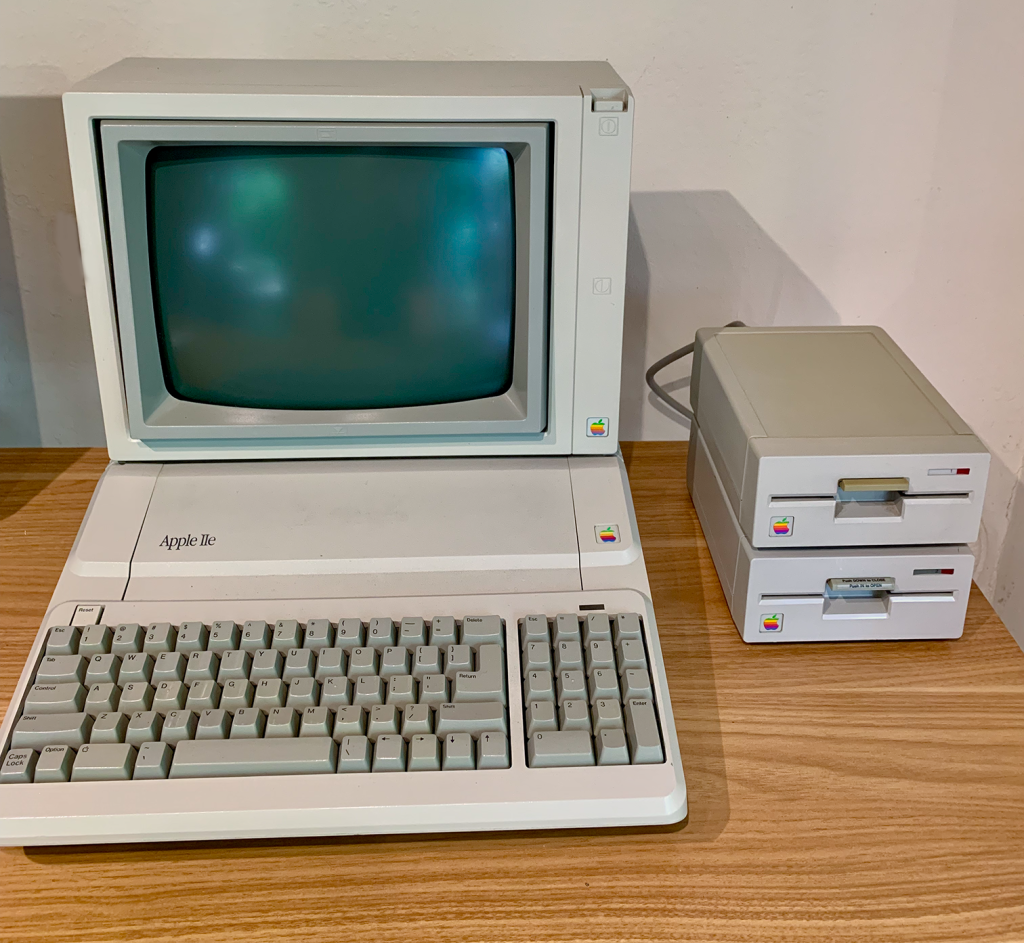
Buying a 40 year-old Apple II to run Apple II Pascal comes with caveats. You will need not just the computer but also two external disk drives, a disk drive controller card and a display monitor that supports 80-column text. This is a photo of the Platinum Apple IIe system that I assembled from various online sources.
The Apple IIe is a good choice for the first-time buyer. With almost six million units sold, there are still a lot of Apple IIe computers out there. Late model Apple IIe computers contain fewer components and are therefore less likely to experience hardware issues that the earlier Apple II or Apple II Plus computers. The Apple IIe Platinum is particularly desirable because of its built-in support for extended memory (128K of RAM), 80-column text display and larger keyboard. It retains compatibility with most of the hardware and software developed for earlier Apple II computers.
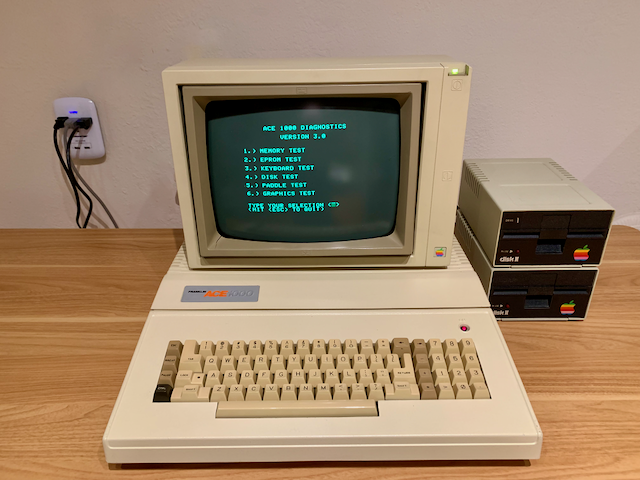
If the computer is an Apple II+ or compatible clone (e.g. my Franklin Ace 1000 shown here) you will also need an 80-column display card (such as the Videx Videoterm). On the Apple IIe, 80 column display support is provided by the auxiliary extended 80-column text card.
An additional caveat is that a 40 year-old computer is way past its expected lifespan and could manifest with a variety of hardware issues that you may need to address. Common issues include:
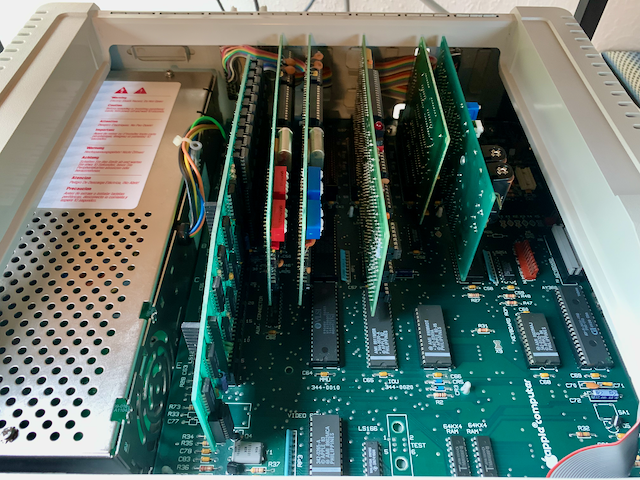
Apple II power supply units (PSU) degrade over time and may require replacement or rebuilding. A failing PSU can result in the computer not starting up or malfunctioning when additional cards are added. A more dramatic failure may occur when the RIFA capacitors in the PSU gently explode!
If you acquire an old Apple II, consider replacing the PSU before using it. ReActiveMicro sells an affordable and reliable replacement PSU kit and will also refurbish your existing Apple II PSU. A word of warning: the interior of a PSU contains high voltage components that can deliver fatal electrical shocks, even when unplugged. Never open an Apple II PSU case unless you know what you are doing!
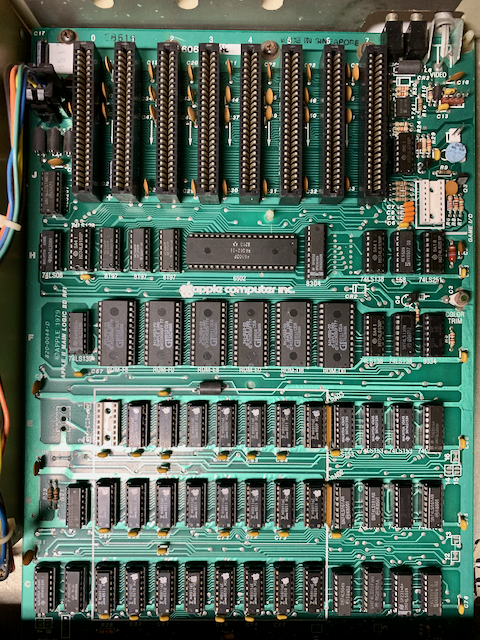
Another common issue with 40 year-old Apple II computers is that electronic components (other than the PSU) such as integrated circuits (ICs), transistors, capacitors and resistors may fail. Again, this can result in the computer not starting up, failing to complete the boot process, experiencing intermittent crashes or manifesting display issues. Determining which components are faulty can be a complicated and time-consuming process.
Sometimes fixing component issues is as simple as reseating the ICs (turn the computer off, carefully remove the IC from its socket, clean the pins and carefully reinsert the IC). Beyond this you are into a (potentially fun) world of repair manuals, arcane knowledge and test equipment. If you are so inclined, there are a number of helpful online repair videos, such as Adrian’s Digital Basement and Chris Torrance’s Assembly Lines. There are also dedicated repair services, such as Joe’s Computer Museum.

Another potential issue to highlight is that Apple II disk drives and the 5.25″ disks they use also degrade over time and can be a source of failure. Apple 5.25 inch double-sided, double-density (DS/DD) floppy disks are now hard to find/buy – try here.
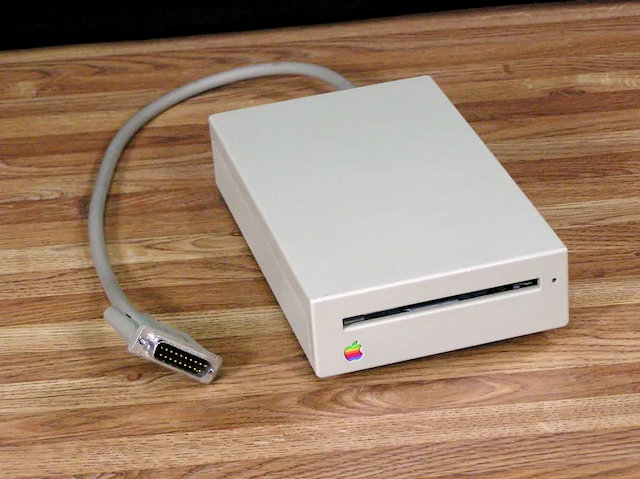
An alternative to 5.25 inch disks on the Apple IIe, IIc and IIgs are 3.5 inch disk drives. These drives use 800K disks, providing about five time the storage capacity of the standard Apple II 143K disks. On the Apple IIe a special disk drive controller is required to support 3.5 disk drives.
There are also a number of modern Apple II virtual disk drives designed to support both floppy disk emulation and hard disk emulation using compact flash cards or USB drives. ReActiveMicro sells the CFFA3000 card. The Booti card is a popular alternative, as is the Floppy EMU card. These virtual drives offer many advantages over physical disks: speed, storage capacity and reliability.
If you want to buy an Apple II computer, where do you find one and how much do they cost? I suggest starting with eBay. Sellers on eBay offer a constant stream of Apple II family computers for sale. In May 2023, a functioning Apple IIe with two disk drives (without a display monitor) cost in the $200-$350 price range. If you are lucky you may see a complete Apple IIe system for sale with a display monitor, usually at a higher price point. One advantage of eBay is that you have some protection if the item advertised is not what you receive.
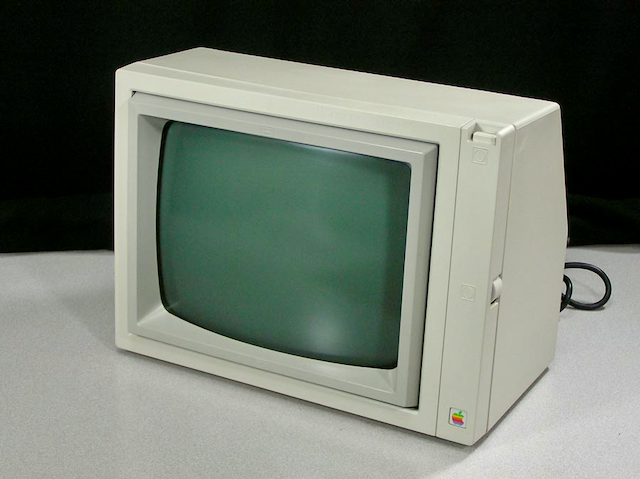
Apple II composite display monitors that are capable of displaying 80-column text cost in the $150-$300 price range on eBay. Beware of high shipping costs, particularly if the system contains a monitor. An alternative source of Apple II display monitors is Apple Rescue of Denver.
Another possible source for Apple II computers is Facebook Marketplace where you may find an Apple II system for sale locally that you can could pick up and therefore save on delivery charges, while also avoiding possible equipment damage during shipping. Estate sales and used computer marts may also be fruitful areas for exploration.
Apple II Emulators: A considerably less expensive alternative to acquiring/buying/repairing a physical Apple II computer is to use an Apple II emulator. These are programs that run on modern computers and emulate an Apple II computer entirely in software. If you are a Macintosh user, I recommend Gerard Putter’s amazing Virtual ][ app which can emulate the Apple II, Apple II+ and Apple IIc computers – including 80-column displays, disk drives (including hard disks), printers and various cards. On the Microsoft Windows platform the most popular Apple II emulator is AppleWin. They are also a Web-based Apple II emulators, such as Apple IIJSe.
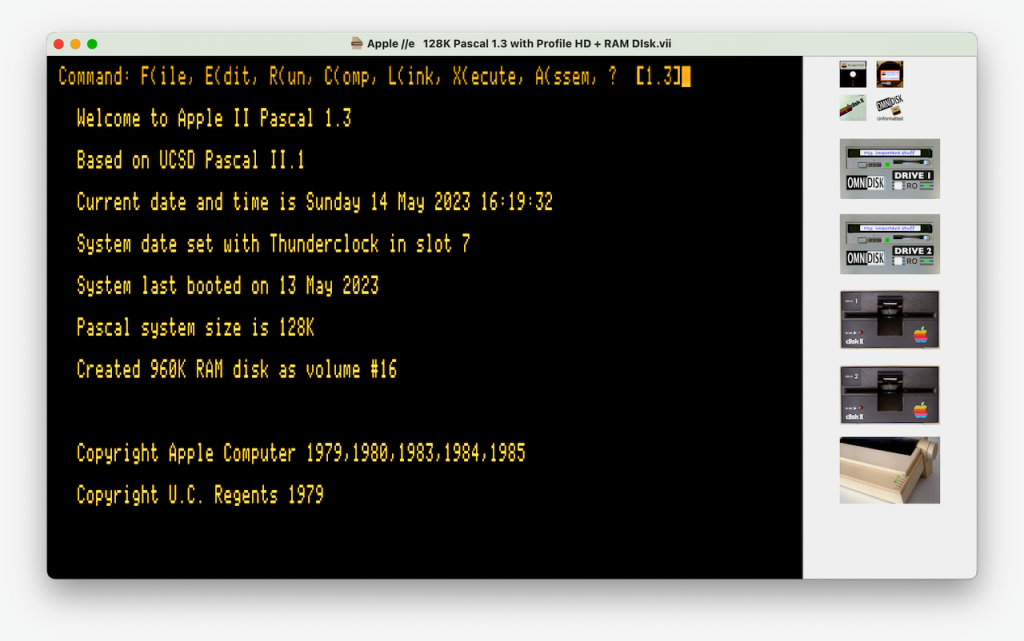
Virtual ][ running on a Macintosh (screen shot) is my preferred platform for Apple II Pascal development. It is a highly accurate emulation of the Apple II, II+, IIe and IIc. Look out for a future post on this topic.
An additional advantage of using an Apple II emulator is free access to thousands of Apple II disk images from sites such as Asimov and Internet Archive. Disk images are files contain the data from old Apple II disks. Emulators, such as Virtual ][, can use these disk image files in the same way that a real Apple II can use floppy disks. If you have a real Apple II computer, disk images can be converted to real floppy disks using ADT Pro software.
So which Apple II option: hardware or software? I chose both. I purchased an Apple IIe and a Franklin Ace 1000 (Apple II Plus clone) on eBay. Both required repairs (more on that in future posts). I also bought floppy disk drives, Apple II display monitors and various cards. I now have both a functional Apple II Plus clone and an Apple IIe as part of my Pascal development environment. I also use Virtual ][ on the Macintosh as my primary Apple II Pascal development platform, for reasons that I will discuss in future blog posting.
In this post I have not discussed the Apple IIc and Apple IIgs computers. This is, in part, because I have no personal experience with either computer. Fully functioning Apple IIc computers are harder to find and tend to be more expensive. The IIgs can run most Apple II software (including Apple II Pascal) in Apple IIe emulation mode but is fundamentally a different platform to the II Plus, IIe and IIc computers.

One thought on “So You Want an Apple II Computer?”